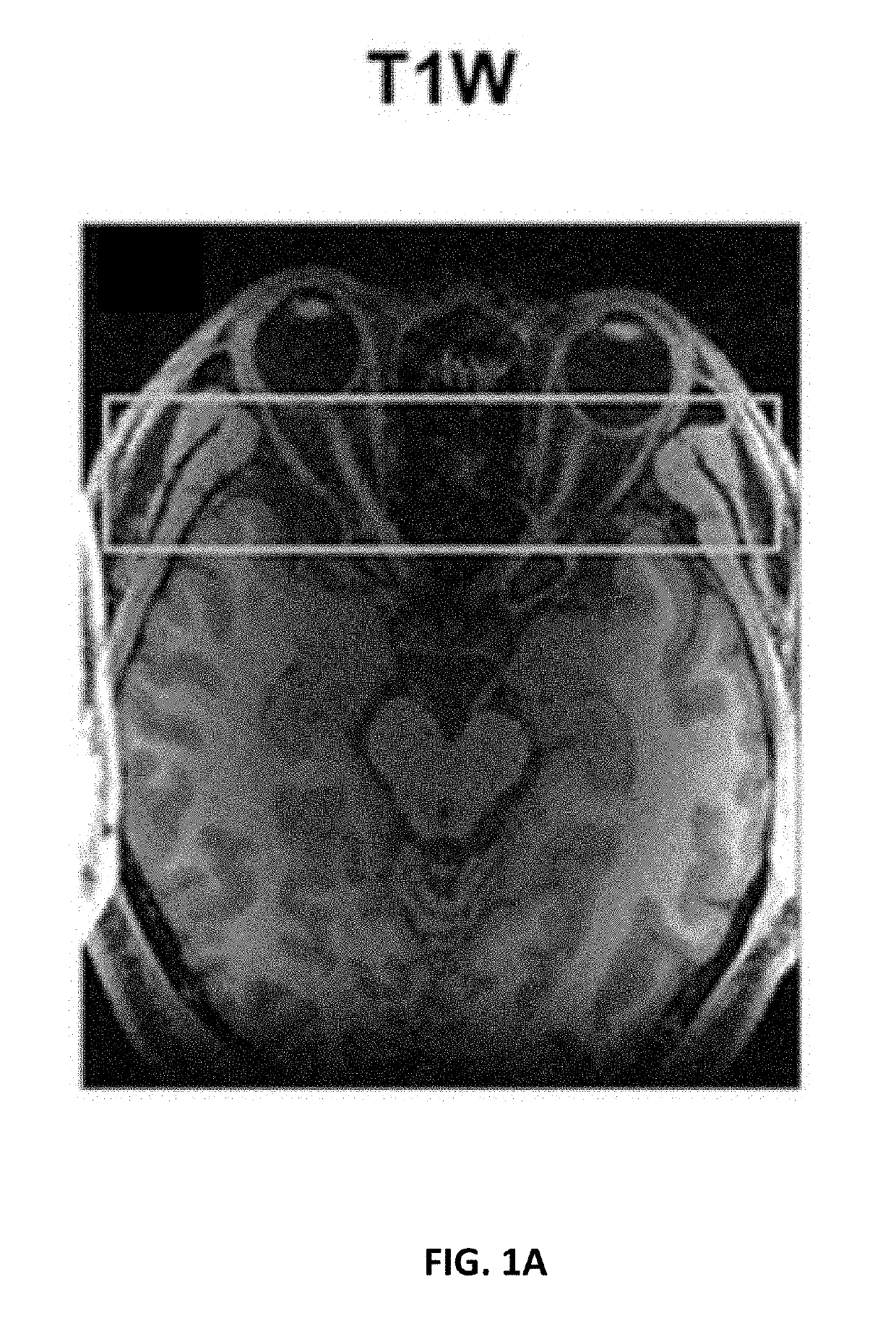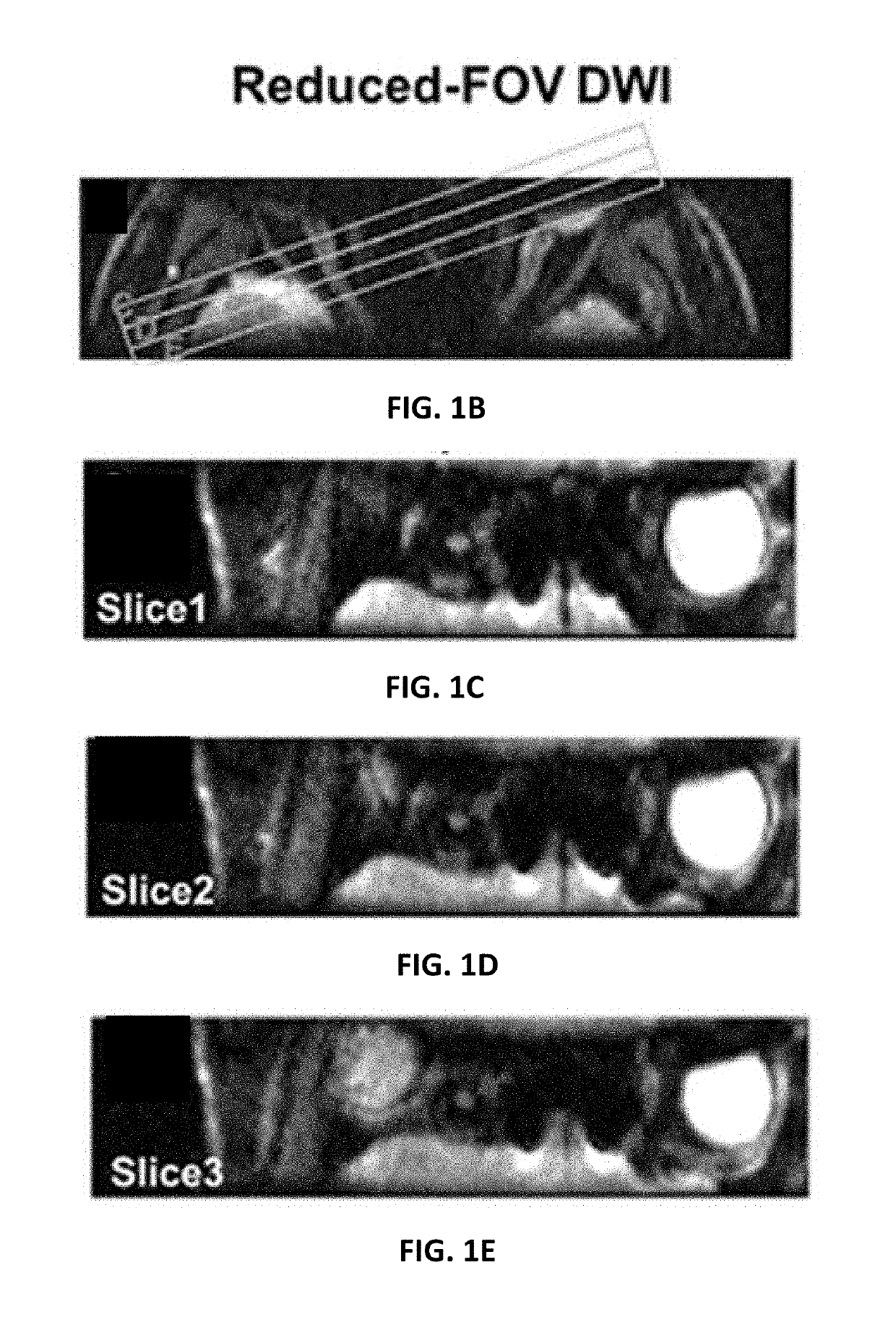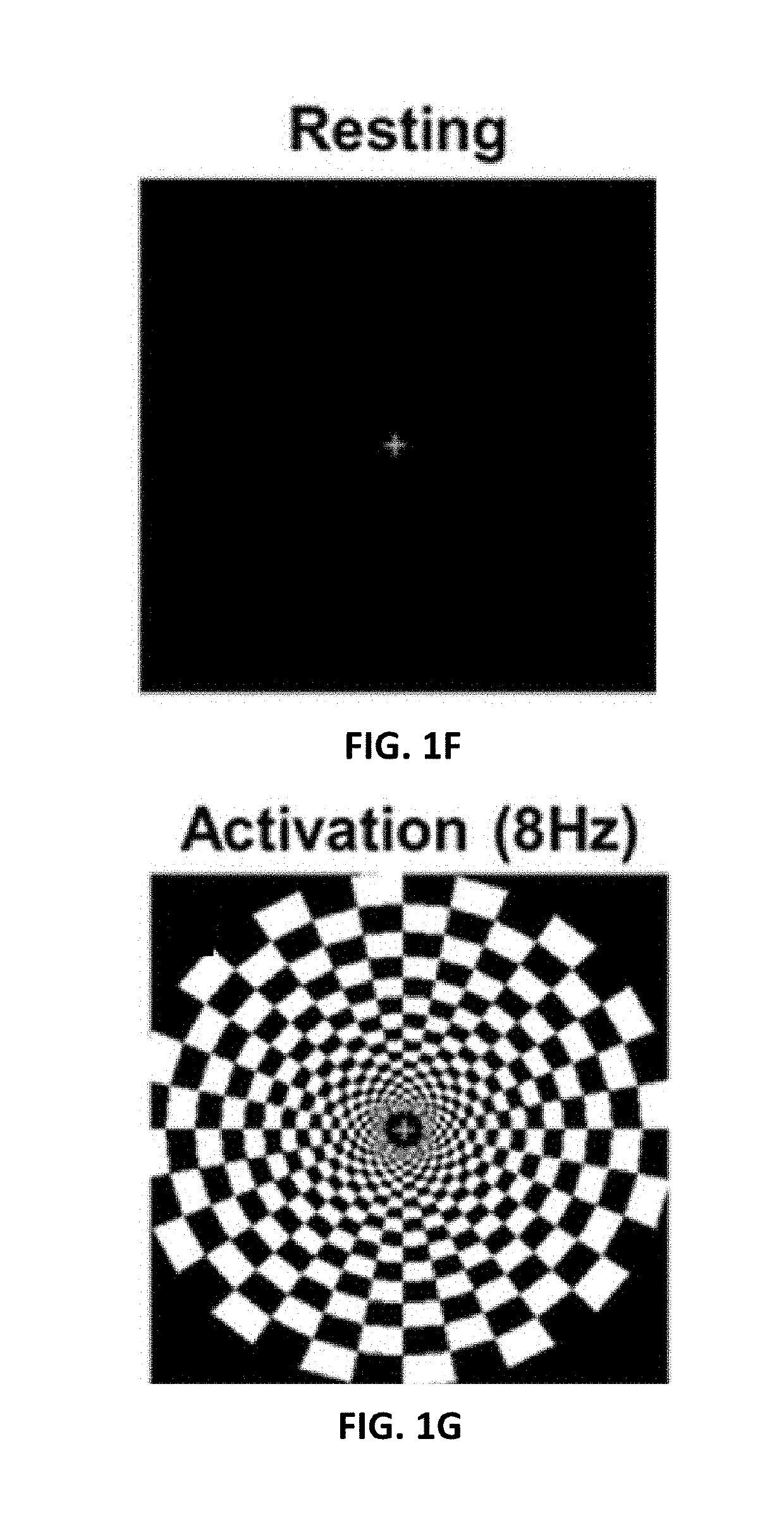Imaging nerve function and pathologies
a nerve function and pathology technology, applied in the field of imaging nerve function and pathologies, can solve the problems of limited success studies with white matter bold fmri, demonstrated the ability to image nerve activation, etc., and achieve the effect of increasing the intensity of nerve activity
- Summary
- Abstract
- Description
- Claims
- Application Information
AI Technical Summary
Benefits of technology
Problems solved by technology
Method used
Image
Examples
example 0
ng of Optic Nerve Pathology in Mice
[0140]To compare the effectiveness of the DBSI and DTI analysis models for the detection of optic nerve pathology in mice, the following experiments were conducted.
[0141]Eight 10-week-old female C57BL / 6 mice underwent optic nerve DBSI, followed by a week-long recuperation prior to active immunization for experimental autoimmune encephalomyelitis (EAE). Visual acuity of all mice was assessed daily. Longitudinal DBSI was performed in mouse optic nerves at baseline (naïve, before immunization), before, during, and after the onset of optic neuritis.
[0142]FIG. 19A is an exemplary diffusion-weighted MRI image of the optic nerves of a mouse prior to active immunization. FIGS. 19B and 19C are exemplary diffusion-weighted MRI images of the optic nerves at two stages of optic neuritis. Inset images on each of FIGS. 19A-19C shows a close-up image of the optic nerves.
[0143]FIG. 20A is a bar graph of the mean nerve volumes estimated from the diffusion-weighted ...
example 1
ysis of Human Optic Nerve Activation and Deactivation In Vivo
[0144]To compare the effectiveness of the DBSI and DTI analysis models for the detection of optic nerve function non-invasively in human subjects, the following experiments were conducted.
[0145]Single-direction diffusion functional MM (fMRI) has been previously employed to assess activation of mouse optic nerve via decreased apparent diffusion coefficient perpendicular to axonal fibers (ΔADC⊥) during flashing-light visual or direct electrical stimulation. Unlike blood-oxygen level dependent (BOLD) fMRI, the stimulation-induced ΔADC⊥ was found to be independent of vascular effects using diffusion functional MRI. This functional fMRI response (ΔADC⊥) was found to be attenuated in optic nerves from mice with optic neuritis.
[0146]In this experiment, diffusion-weighted imaging (DWI) measurements were performed in human optic nerves with visual stimulation and the data were analyzed using diffusion basis spectrum imaging (DBSI) ...
example 2
n of DTI, DBSI and T2 Spectral Analysis of Frog Sciatic Nerve Activation and Deactivation Ex Vivo
[0154]To demonstrate the ability to perform function imaging of neuronal activity using DBSI and T2 spectral methods, the following experiments were conducted. The experiments were carried out on perfused, ex vivo frog sciatic nerves, which due to their extreme robustness have been the subject of numerous electrophysiology and MM studies.
[0155]Methods
[0156]Frog Nerve Preparation
[0157]Jumbo bullfrogs (Rana catesbeiana) were purchased from Rana Ranch (Twin Falls, Id.) and housed in a climate-controlled environment with a 12 / 12 hr-light / dark cycle. The animal housing consisted of a standard clear plastic container [18″(1)×10″(w)×10″(h)] holding 1.5 L of water and tipped at an angle to provide a dry area within the cage. Frogs were fed pelleted chow (5LP3, Lab Diet, St. Louis, Mo.) three times per week.
[0158]Frogs were anesthetized in a solution of tricaine methanesulfonate (Sigma-Aldrich, S...
PUM
 Login to View More
Login to View More Abstract
Description
Claims
Application Information
 Login to View More
Login to View More - R&D
- Intellectual Property
- Life Sciences
- Materials
- Tech Scout
- Unparalleled Data Quality
- Higher Quality Content
- 60% Fewer Hallucinations
Browse by: Latest US Patents, China's latest patents, Technical Efficacy Thesaurus, Application Domain, Technology Topic, Popular Technical Reports.
© 2025 PatSnap. All rights reserved.Legal|Privacy policy|Modern Slavery Act Transparency Statement|Sitemap|About US| Contact US: help@patsnap.com



